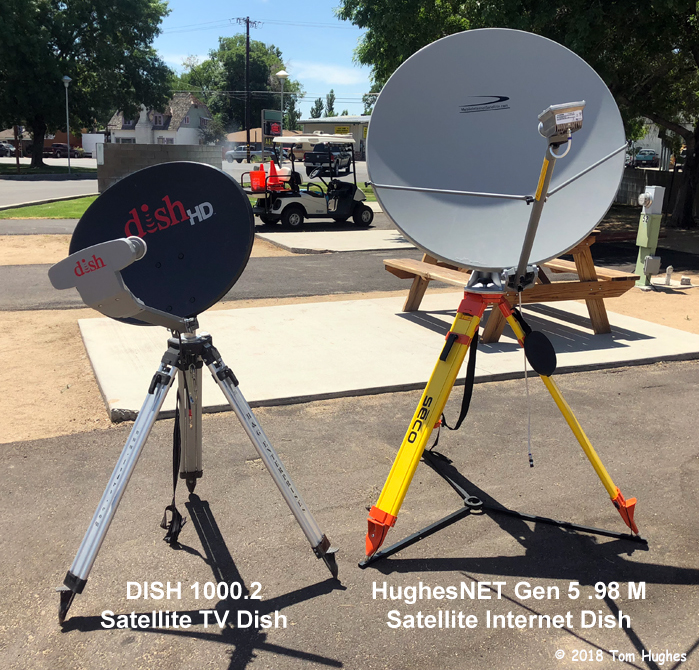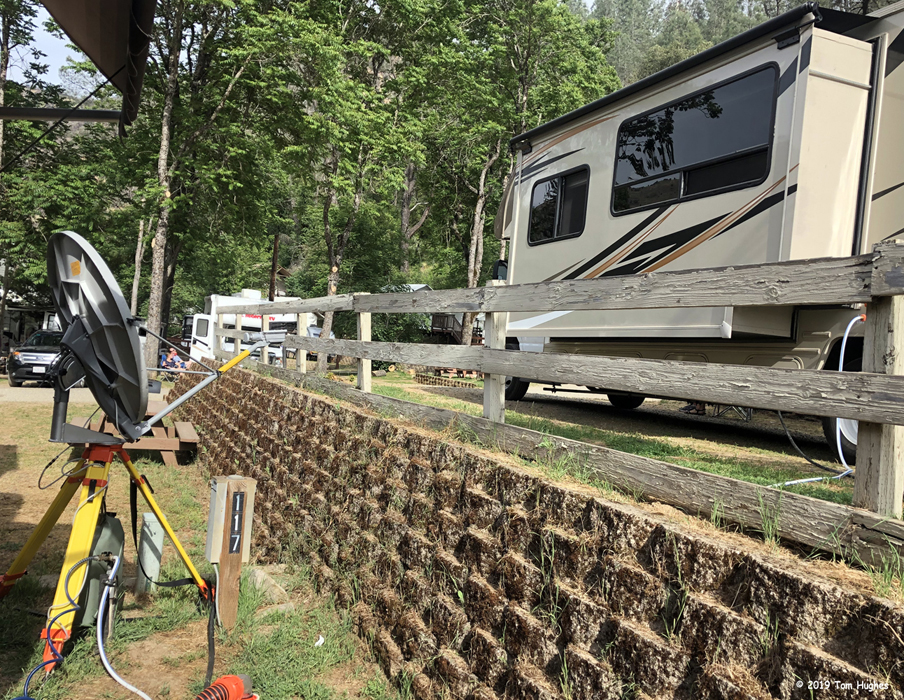Please Re-Register To Access All Our Forums New Features on RV-Living Forum
Post all your RV questions or comments on RV Forum
This is a cellular data plan. Who's the carrier?
yes, that is correct. I don't recall who it's currently with. When I spoke with them, they said they were negotiating with all four of the major carriers in the US.
This is a cellular data plan. Who's the carrier?
They don't say, but the Pepwave router they use is unlocked so any carrier's SIM should work. I'm not sure just which model it is, but it could be one of the BR1's that accept multiple SIM's with failover. Obviously knowing who they're using for your account would be an important question to ask before signing up.
yes, that is correct. I don't recall who it's currently with. When I spoke with them, they said they were negotiating with all four of the major carriers in the US.
Ok, so you'll still have areas where cell data isn't available no matter what router or amplifier you use. In that case, then check out Millenicom.
Ok, so you'll still have areas where cell data isn't available no matter what router or amplifier you use. In that case, then check out Millenicom.
??? No cell data is no cell data no matter what carrier you want to use.
??? No cell data is no cell data no matter what carrier you want to use.
Yep. My point is OP should consider satellite Internet if he's going to be "in the middle of nowhere" a lot.
Op disappeared.
Some middles-of-nowhere have Verizon coverage, some don't. If you can limit yourself to those, a phone may be just fine.
There's a better chance you will if you consult the Verizon coverage map.
Some remote spots like the Rio Grande Gorge have AT&T and no Verizon. Coverage Maps may not tell the whole story of actual field conditions. Using the same example of the Rio Grande Gorge AT&T cellular connectivity can go from zero to excellent with each turn in the river. A spot near the end of the road into the gorge actually gets better connectivity than some spots closer to town and the main highway.
Yep. My point is OP should consider satellite Internet if he's going to be "in the middle of nowhere" a lot.
If satellite internet is anything like satellite TV and radio, terrain will affect the ability to get a clear view of the satellite(s). We have been unable to get satellite TV in areas of NM, AZ, UT, KY and WV that I can recall. Is satellite internet affected by trees as much as satellite TV is? We find that getting satellite TV when camping in the National Forests can be a challenge. I have had 300' of cable out in some spots to get a clear shot at the single satellite that our system uses.
Yes, sat Internet is subject to the same clear view and weather issues as TV. That said, with our Dish subscription and both eastern and western arc portable dish capability, we have not landed on a site yet where I couldn't get service from one arc or the other. Unfortunately, sat Internet doesn't have similar flexibility...
Yes, sat Internet is subject to the same clear view and weather issues as TV. That said, with our Dish subscription and both eastern and western arc portable dish capability, we have not landed on a site yet where I couldn't get service from one arc or the other. Unfortunately, sat Internet doesn't have similar flexibility...
OP, unlike Dutch and trailertraveler who only have sat TV, I've had sat TV for about 15 years and sat Internet for about 2 years.
Though sat TV and sat Internet both use dishes and both aim at satellites, I've found the similarity pretty much ends there. First and foremost, sat Internet uses much bigger dishes. For example, the rooftop Winegard Travler dish (which is just a 1000.2) is about 26". On the other hand, my HughesNet Gen 5 dish is .98 m (38.5"). That's a whopping difference in dish area and consequently in the ability to acquire satellites.
Like sat TV, I experienced some rain fade on the big HughesNet dish while camping in the mountains near Yosemite, but it wasn't significant enough to degrade my sat signal.
Less than ideal sat Internet dish position
Is satellite internet affected by trees as much as satellite TV is? We find that getting satellite TV when camping in the National Forests can be a challenge. I have had 300' of cable out in some spots to get a clear shot at the single satellite that our system uses.
You would probably have to do the same thing for a sat Internet dish. However, the larger sat Internet dish should make it easier to acquire a signal . . . and you only have to acquire ONE of two possible satellites with HughesNet Gen 5 (typically Echostar 19 @ 97.1W).
Edited September 19 by Zulu
I need a reliable internet connection before i can consider full time. Any help appreciated.
It doesn't appear that you have been back to see what has been suggested, but if you are still reading this I suggest that you also consider the Wifi Ranger equipment.




